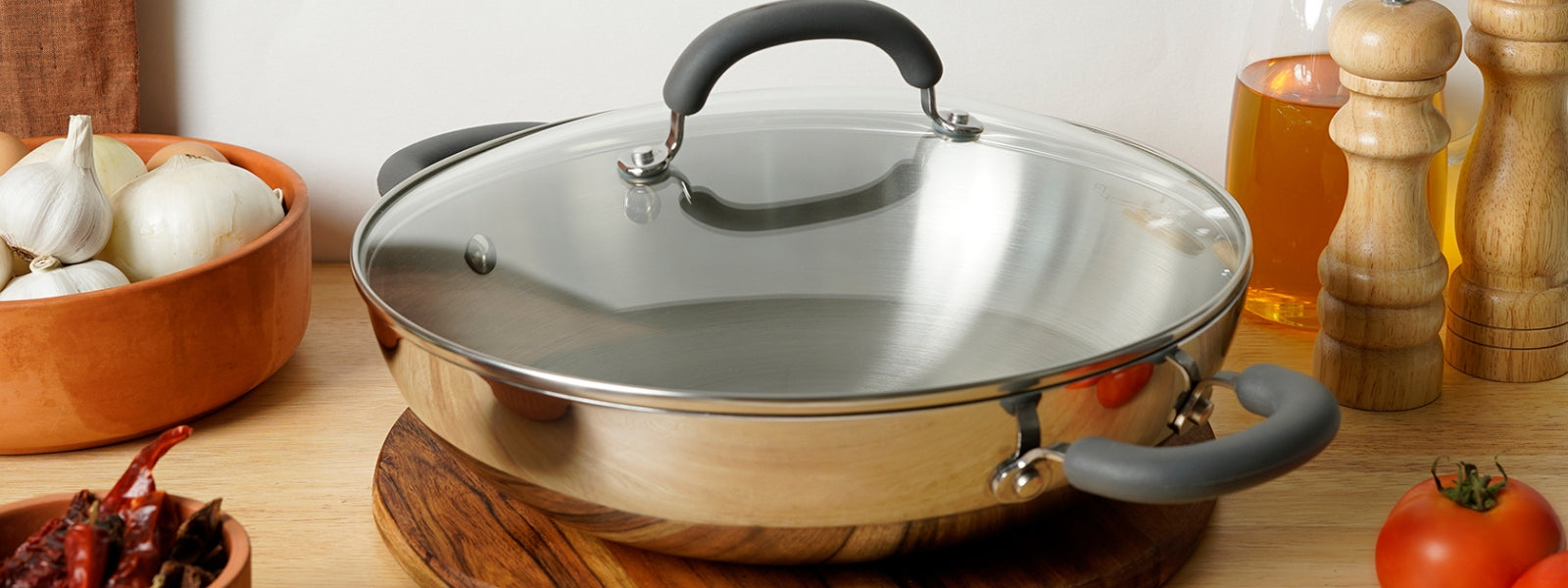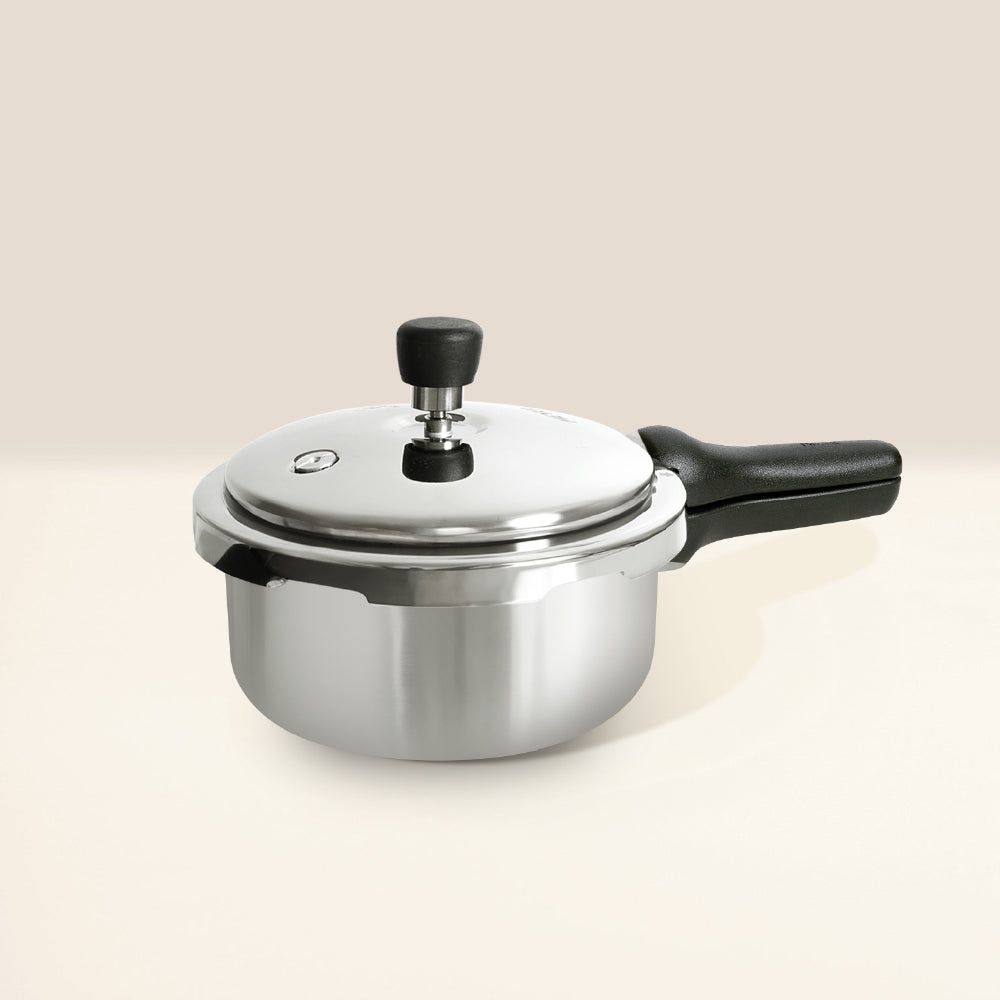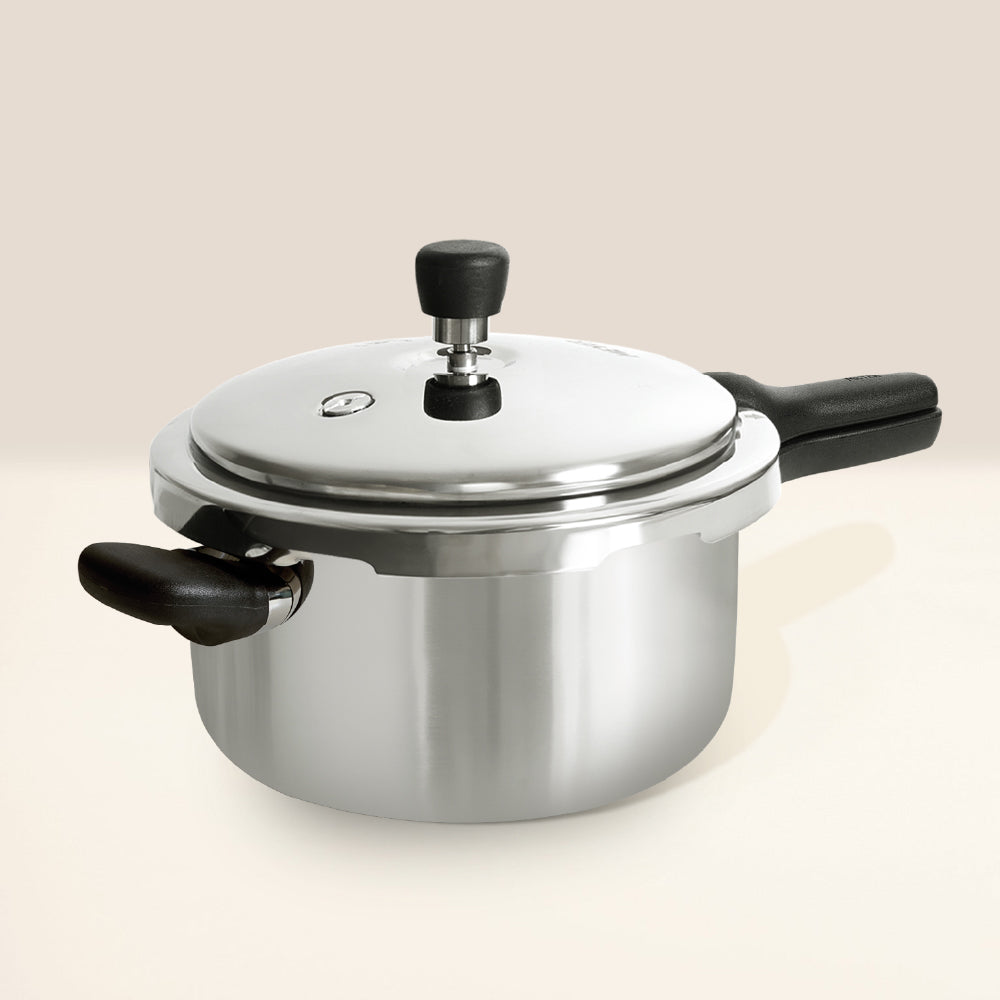Pressure cookers are a fantastic tool for quick and easy meal preparation. They allow you to cook food faster and retain more nutrients compared to traditional cooking methods. However, pressure cookers can be dangerous if not used correctly. In this article, we will go over the importance of pressure cooker safety and provide tips and tricks to help you use your pressure cooker safely and successfully. From understanding the different parts of your pressure cooker to cooking tips, this comprehensive guide will help you make delicious and nutritious meals with confidence.
Table of Contents
MEYER Presta Tri-Ply With Outer Lid Pressure Cooker 5.5L
I. Introduction
Pressure cookers are a fantastic addition to any kitchen. They are designed to cook food faster and retain more nutrients compared to traditional cooking methods. They are great for preparing meals quickly, especially when you don't have much time to spare. However, pressure cookers can also be dangerous if not used correctly. When used improperly, they can explode, causing serious injury and even death. Therefore, it's important to take the necessary precautions when using a pressure cooker to ensure your safety and the safety of those around you.
In this article, we will provide an overview of the importance of pressure cooker safety and provide tips and tricks to help you use your pressure cooker safely and successfully. We will start by discussing the different parts of your pressure cooker, as well as how to read and follow the manufacturer's instructions. We will also discuss the importance of understanding the maximum capacity of your pressure cooker.
Next, we will cover safety tips for using pressure cookers. We will discuss the importance of using enough liquid, not overfilling the pressure cooker, and releasing pressure safely. We will also go over how to avoid opening the pressure cooker too soon, checking seals and gaskets, using appropriate utensils, and keeping the pressure cooker clean.
In addition to these safety tips, we will also cover additional safety tips, such as keeping pressure cookers out of reach of children, not leaving them unattended, and knowing when to replace your pressure cooker.
Finally, we will provide cooking tips for pressure cookers. We will discuss how to choose the right ingredients, adjust cooking times and temperatures, and use natural and quick release methods.
By the end of this article, you will have a better understanding of the importance of pressure cooker safety and how to use your pressure cooker safely and successfully. With these tips and tricks, you can make delicious and nutritious meals with confidence, knowing that you are using your pressure cooker safely and responsibly.
II. Know Your Pressure Cooker
A. Understanding the different parts of your pressure cooker:
- Lid: This is the top part of your pressure cooker and it typically locks onto the base of the pressure cooker.
- Gasket: This is the rubber ring that is located on the inside of the lid. It forms a seal between the lid and the base of the pressure cooker.
- Pressure release valve: This is the small valve located on the top of the lid that releases pressure when the pressure cooker is in use.
-
Pressure indicator: This is the small metal pin or rod that rises and falls to indicate the pressure inside the pressure cooker.
B. Reading the manufacturer's instructions and following them closely:
- Before using your pressure cooker for the first time, be sure to carefully read the manufacturer's instructions.
- Pay attention to any safety warnings and ensure that you understand the instructions before using your pressure cooker.
-
Keep the instructions handy and refer to them as needed.
C. Understanding the maximum capacity of your pressure cooker:
- Most pressure cookers have a maximum fill line, and it is important not to exceed this line.
- Overfilling your pressure cooker can cause food to block the pressure release valve, which can lead to a dangerous buildup of pressure.
- Additionally, overfilling your pressure cooker can cause the food to cook unevenly and not reach the desired level of tenderness.
III. Safety Tips for Using Pressure Cookers
A. Use Enough Liquid:
- Pressure cookers require a certain amount of liquid to create steam and build pressure. Be sure to follow the recipe or manufacturer's instructions for the recommended amount of liquid.
-
Using too little liquid can cause the pressure cooker to overheat and damage the food, as well as potentially damaging the pressure cooker itself.
B. Do Not Overfill the Pressure Cooker:
- Overfilling the pressure cooker can cause the food to block the pressure release valve, which can lead to a dangerous buildup of pressure.
-
To avoid overfilling, only fill the pressure cooker up to 2/3 full when cooking foods that expand during cooking (like grains, beans, and some vegetables) and up to 1/2 full when cooking foods that do not expand (like meat).
C. Release Pressure Safely:
- Always follow the manufacturer's instructions for releasing pressure from your pressure cooker.
- The two most common methods are natural release (allowing the pressure to drop on its own) and quick release (using the pressure release valve to manually release the pressure).
-
Never attempt to force the pressure release valve open with your fingers or any other object.
D. Do Not Open the Pressure Cooker Too Soon:
- Wait until the pressure has been fully released before attempting to open the pressure cooker.
-
Opening the pressure cooker too soon can cause the food to spatter or even explode out of the pressure cooker.
E. Check Seals and Gaskets:
- Before each use, check the seals and gaskets on your pressure cooker to make sure they are in good condition.
-
Damaged seals and gaskets can cause the pressure cooker to leak steam and lose pressure.
F. Use Appropriate Utensils:
- Only use utensils that are labeled as safe for use with pressure cookers.
-
Avoid using metal utensils that can scratch the non-stick coating on some pressure cookers.
G. Keep the Pressure Cooker Clean:
- Clean your pressure cooker thoroughly after each use.
-
Remove any food particles or residue from the pressure release valve, lid, and gasket to prevent buildup that can affect the safety and performance of the pressure cooker.
IV. Additional Safety Tips
A. Keep Pressure Cookers Out of Reach of Children
- Store your pressure cooker in a secure and high place out of reach of children
- Make sure the cooker is cooled down and the pressure has been released before opening it around the children
-
Never allow children to operate the pressure cooker, even with adult supervision
B. Do Not Leave Pressure Cookers Unattended
- Never leave your pressure cooker unattended while cooking
- Keep an eye on the pressure gauge to ensure it is functioning properly and adjust the heat as needed
-
If you must leave the kitchen for any reason, turn off the heat and release the pressure before leaving
C. Use a Timer to Avoid Overcooking
- Set a timer to ensure you don't overcook your food and to remind you to release the pressure
-
Follow the recipe instructions and adjust the cooking time as needed for different ingredients and quantities
D. Know When to Replace Your Pressure Cooker
- Regularly inspect your pressure cooker for signs of wear and tear, such as a damaged sealing ring or pressure gauge
- Follow the manufacturer's guidelines for replacing parts and the pressure cooker itself
-
If you experience difficulty with pressure release or notice any leaks or damages, it's time to replace your pressure cooker.
V. Cooking Tips for Pressure Cookers
A. Choosing the Right Ingredients
- Choose ingredients that cook well under pressure, such as tougher cuts of meat, beans, and grains.
- Avoid ingredients that foam or froth, such as pasta or rice, which can clog the pressure valve.
-
Use enough liquid to create steam and prevent burning or scorching.
B. Adjusting Cooking Times and Temperatures
- Follow recipe instructions for cooking times and temperatures, but adjust as needed based on the size and type of your pressure cooker.
- Use high pressure for tougher cuts of meat and longer cooking times and low pressure for delicate foods or shorter cooking times.
-
Consider using a pressure cooker cookbook or online resource for specific cooking time and temperature guidelines.
C. Using Natural Release
- Natural release means letting the pressure cooker cool down on its own before releasing the pressure.
- This method is ideal for delicate foods, such as vegetables or fish, as it prevents overcooking.
- Follow recipe instructions for natural release times.
D. Using Quick Release
- Quick release means manually releasing the pressure from the cooker by turning the valve.
- This method is ideal for quickly stopping the cooking process or for releasing excess pressure.
-
Use caution when using quick release, as the steam can be hot and may cause burns.
-
VI. Conclusion
Using a pressure cooker can be a fast and convenient way to cook meals, but it's important to prioritise safety and follow guidelines for successful cooking. By knowing your pressure cooker, following safety tips, and adjusting cooking times and temperatures, you can make delicious and nutritious meals with confidence. Remember to always read the manufacturer's instructions, stay attentive while cooking, and never compromise safety for speed. With these tips and tricks, you can make the most of your pressure cooker and enjoy delicious meals in no time.












Leave a comment